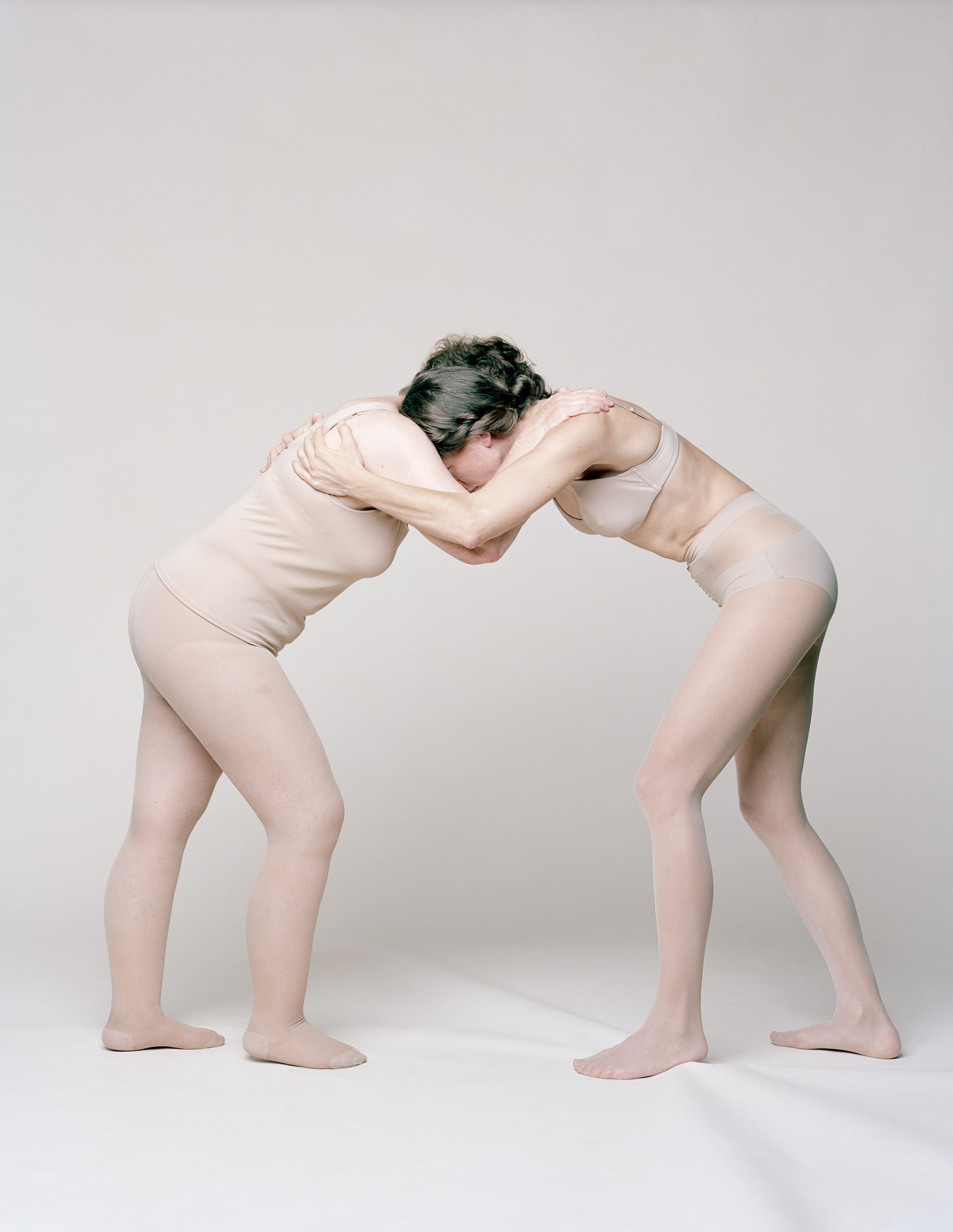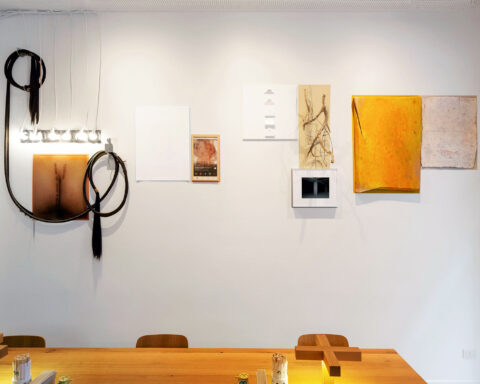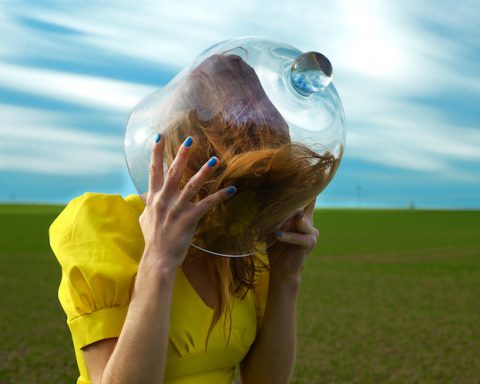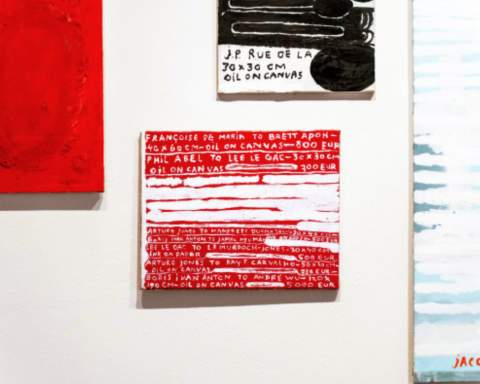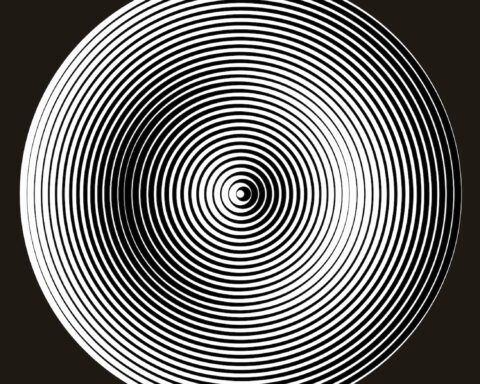Julia Krahn was born in Jülich and grew up in Aachen, Germany. To devote herself to photography in 2000 she left studying medicine at the Albert Ludwig University in Freiburg and in 2001 she moved to Milan (Italy) where she began her collaboration with Galleria Magrorocca. In 2008 she participated in the Biennale in Tehran (Istanbul) and won the second prize San Fedele in Milan. In 2009 she received a special mention of the Tequila Cuervo Centenary Award for Emerging artist – Zona Maco Art Fair 2009 Mexico City (Mexico). With her personal Angelus Militans / Nunc Instantis she began a collaboration with Carlotta Testori Studio in 2011 in Milan. In 2012 she was chosen as a winner of the Combat Award. In 2014 she opened her exhibition Trust Me at HdkK in Stuttgart (Germany) and won first prize 100³ – 100 artists – 100 rooms in Sorrento, where she made the permanent installation Sirens. In 2016 she inaugurated the SchönerHeit project in Göttingen in Germany, Bremerhaven and Berlin and was invited to the exhibition SEIN. ANTLITZ. KÖRPER, besides realizing NEEDS in collaboration with the GrazMuseum and Akademie Graz. The project is expanding on a European level. In 2017 there are plans, residences and exhibitions in Bologna, Bolzano, Massa, Bad Wilsnack, Hamburg, Graz, Jerusalem, Washington.
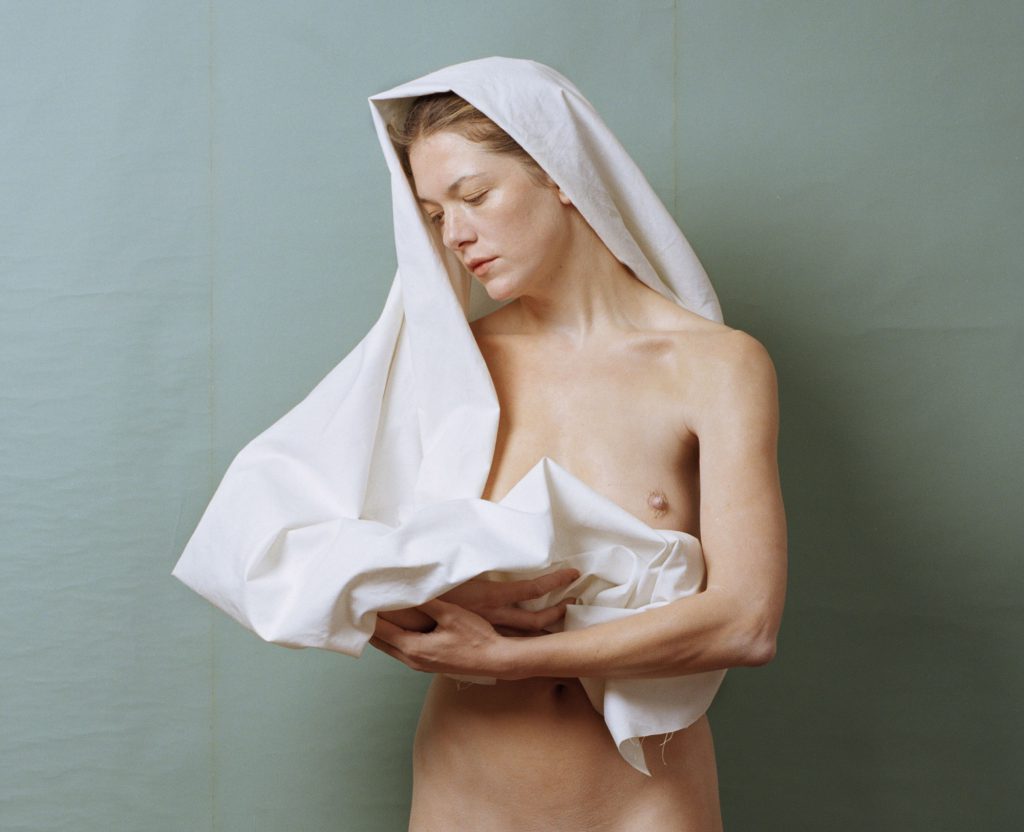
Francesca Pirillo: When and how did you become interested in the visual arts?
Julia Krahn: Art has always been present in my life, from childhood, through my family.
My godmother took us to museums and questioned us about what we had seen, my grandmother took us to classical concerts, and my uncle was an artist.
From art education a personal interest was born when I became aware that the artist, through his work, communicates concepts and emotions despite being absent.
I remember one of the first classical concerts that completely upset me, I cried tears of joy and despair indecipherable at the same time. I felt relieved, and for the first time I had feelings of wanting to be able to wake up similar feelings in others.
F.P.: The medium of photography is one of the main instruments which serves to communicate your message; you already have catchy concepts such as “rendering eternal”, “eternalize”, or to distort the concept of time, enthrusting a complex narration at the instant of the shutter click. What was the aspect that has intrigued you and that made you decide to choose this as your main medium?
J.K.: I like to touch things and so I try to produce my thoughts and feelings. I am able to do this thanks to photography.
I was drawn to the fact that I can summarize, testify, and at the same time I feel that I have the power to do magic. Photography frames inevitably, but this is one of its greatest limitations as well as its immense strengths.
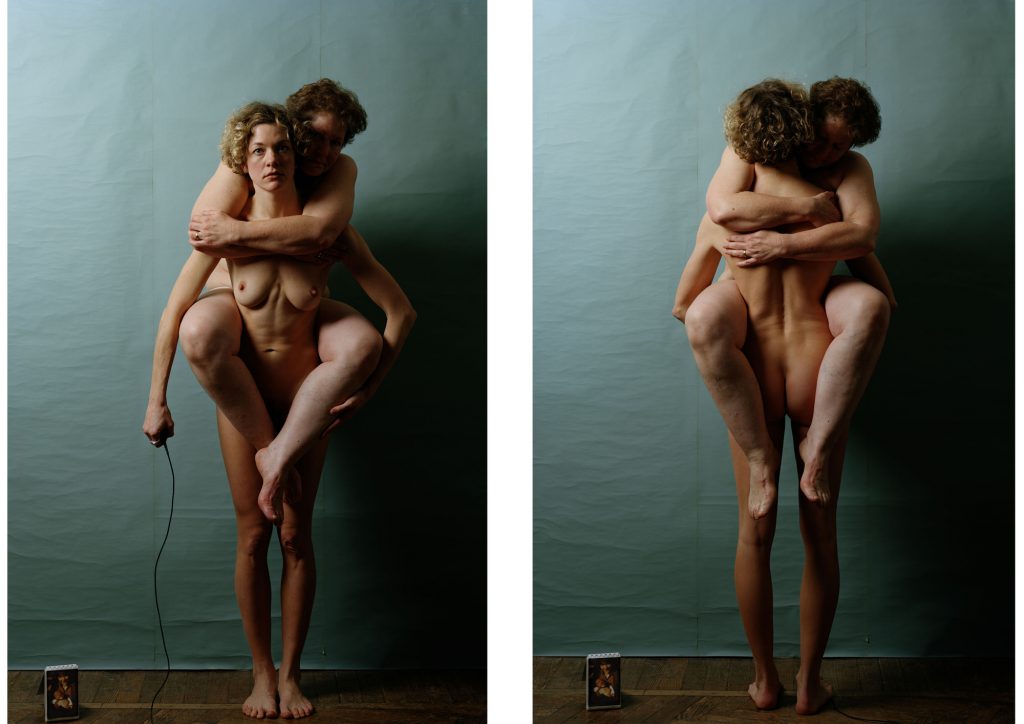
F.P.: The use of pictures has changed greatly over the past decade, also in relation to its widespread diffusion: the smartphone always in hand, social networks, selfies, to show your appearance at all costs. What do you think has changed in the enjoyment of such a presence of images in everyday life? Has this transformation altered your research?
J.K.: My research investigates the basic needs of man and of society. I believe that selfies are a consequence of a need to hear the testimony of themselves, to exist and to show this existence to as many people as possible. This interests me, I am interested in what is at the origin of the social phenomenon; therefore yes. It intervenes in my research, but no more than other social phenomena.
F.P.: In the choice of subjects there is often a strong emotional component of a strictly personal nature, as in the works which involve your family, for example Mutter und Tochter / Mother and Daughter, Vater und Tochter / Father and Daughter … it’s interesting that the image becomes the result of your emotional interaction, tell us about this aspect.
J.K.: My work is me. Each work is the materialization of my thoughts and/or emotions. For a long period of time I was the protagonist. In front of and behind the camera. Even my parents, who themselves are part of me.
Getting naked in front of the questions requires opening up to the discussion, it requires honesty and availability of wanting to seriously look and this inevitably leads to answers, often quite serious. It is getting naked in all senses.
A few years ago I started to work with people outside of my private life. These people are never models, but people who go with me to explore themselves. Again, in these cases there is a very strong emotional interaction.
I think this is precisely the strength of my work, which is able to feel these emotions, on the contrary to only seeing them in a simple photograph.
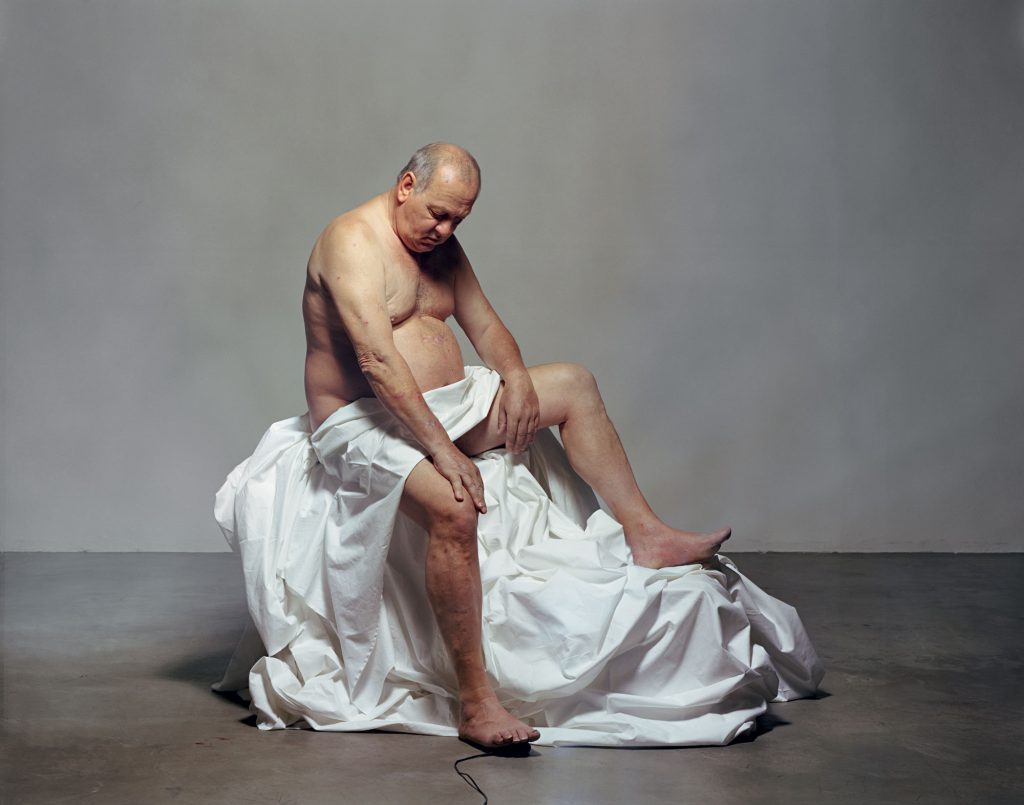
F.P.: Images of birds are recurring, such as the doves in the performance Petticoat, the ravens in the installation Bread Wine Flesh, in the video the Last Supper … a figure full of iconographic references. How do you serve in these works? What is the symbolic meaning that they give?
J.K.: Each attribute in my work has its own significance, historical or personal: the pigeon-dove is for the Holy Spirit as well as for the sacrifice, for passion and hope. When “Your eyes are like doves”, a phrase from Song of Songs, she brings us a message of love; the raven is about religion itself, he is myth, death, wisdom, reincarnation. It is he who leaves Noahs Arc with the dove, but he never comes back, not until my work Bread Wine Flesh. And then there are the angels. Yes, it is true, there are many birds, perhaps because I am attracted to anything that can make me forget the gravity.
F.P.: You work not only with photography but also with video, performance, I also saw sculptures and small objects. How do you choose your medium?
J.K.: Every time I approach new research I ask myself by which means would be suitable, which matter to experiment. Often the materials are direct symbols, like golf leaf, the ceramic epitaphs. The material reflects its general affinity and other concepts that reinforces the work. Also use existing objects, such as brooches and cameos. I give them a second life, placing my Polaroids on photography or existing miniatures. It’s always a I dialogue between my thought and what has to be associated to the object itself or of its past. I like the idea of timelessness.
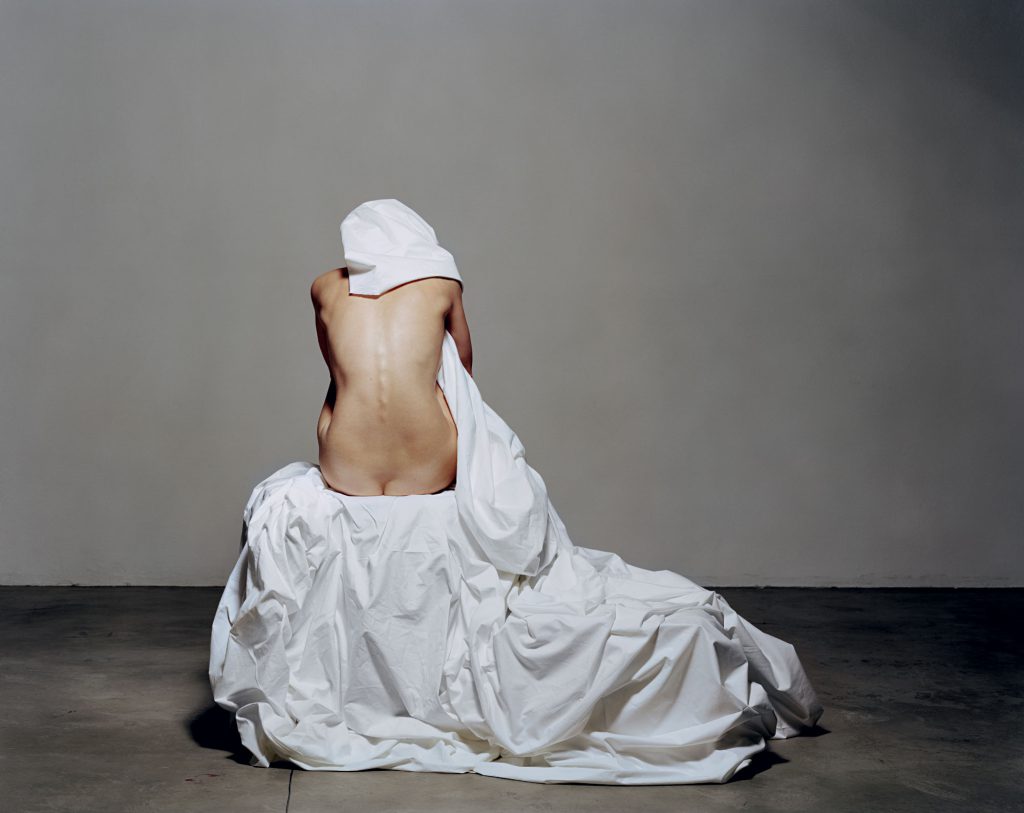
F.P.: What do you think should be the role of art in our society? And what do you think of its uses? More and more we try to bring the work outside of museums and galleries, to give art back to live and share with everyone. Are you interested in this kind of sharing?
J.K.: Art must make us ask ourselves questions, make us look over the walls of our existence.
I personally choose topics concerning society and its current problems. I’m interested in the values that change., the myths that transform and the emptiness that is increasingly filling our society more. I’m interested in man’s basic needs.
My work feeds on these questions of society, for this I’m interested in an public, not just a niche, encountering these issues, allowing an interaction and an osmosis. Some say that art should not educate, but I believe that today it is our duty to give meaning to thought. It’s my responsibility to take a position and to invite the observer to question themselves, their values and the world around them.
F.P.: There is a very intriguing work from 2014 that I would like you to describe, a site-specific in fact, born in Sorrento – Sirens – built on the narrative of the myth of the Sirens; a very refined and suggestive piece. How did this idea arise and how did you develop it?
J.K.: The myth of the Sirens struck me as a metaphor for life and research on human omniscience. In the course of my research I came across one of Plato’s texts which tells of the Hades Sirens, and I remained fascinated by his story of our passage from life to death. The work was born in Sorrento, namely the Art Hotel Gran Paradiso, by Mario Colonna; it was made entirely on site. The ‘vortex of fire’ has been interpreted as a volcano, and the ‘Lete river’ like ceramic necklines. Sculptures in Vesuvius stone were born, baked in an 800 degree oven several times to create white ceramic necklines. Then these sculpture sirens were launched into the water to be shot in photography and video. The video is accompanied by a cello composition by Luca Signorini, viola by Eleonora Umidon and singing by Megateri.
In my new research for the award ArtOnTime I examine this thought in depth. The Oblio in fact investigates the abandonment of thoughts and feelings. We return to the Lete river and takes us to the Island of the dead of Böcklin. The research carried out will be mise-en-scene in a performance in Venice on June 30th and then in Rome at the Europa Festival at MAXXI.
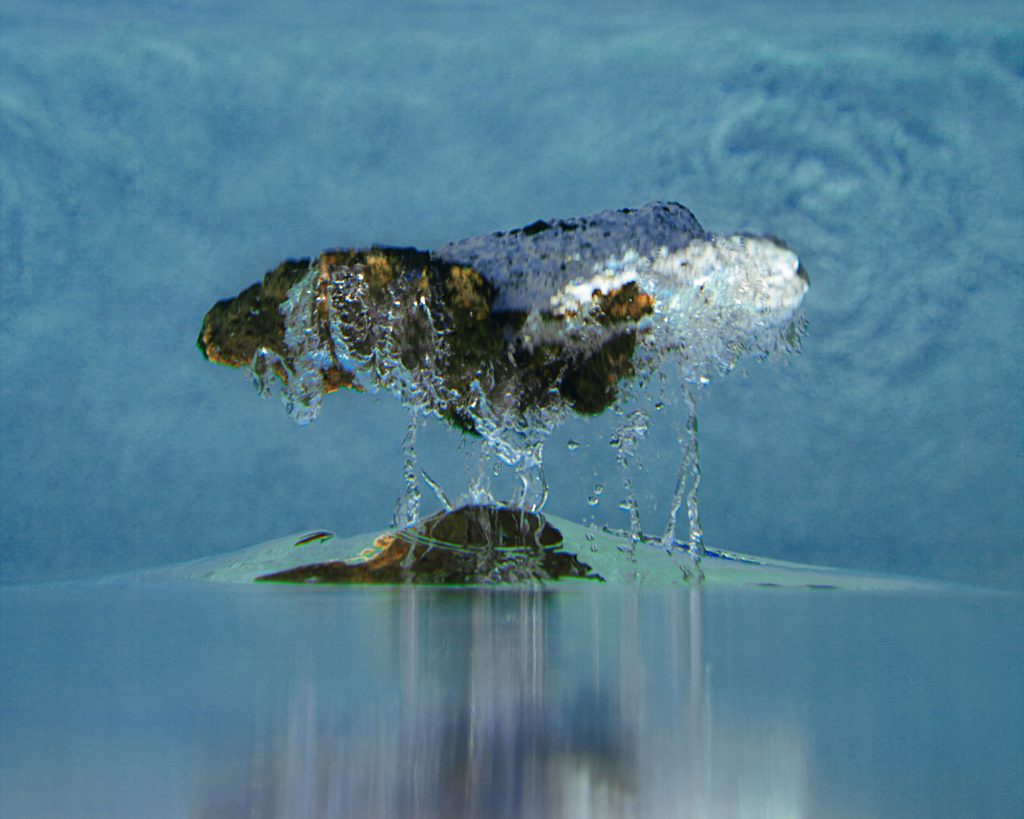
F.P.: Elements of iconography and religious art of the past often appear in your work. What aspects in this respect are dear to your heart?
J.K.: The iconography is used to describe, to write a story under the lines. Symbols are nothing but a way to communicate, to communicate what is significant for the artist. When a symbol becomes a part of my work it happens completely naturally. I begin to create without asking myself too much, then I come to the stage where I wonder why I have done something, I investigate the sources and it is then that I am realizing the real work. First the unconscious wisdom pulls out the source and then you add the form thanks to the experience and the ise of reason.
Those symbols that I use in my work are part of me, of my personal assets and the collective. Like this I tell stories instantly. It’s a way to reach the soul directly.
F.P.: Tell us about your last work, SchönerHeit; Investigation of the body, about its function, on communication. A rich work of references and messages. Tell us the way through to the finished project.
J.K.: SchönerHeit(a neologism that can be translated as: more-beauty) tells of love through his eyes. It shows that beauty is not tied to the appearance of a person or an object, but was born in the eyes of the beholder of that person or object. As it is said in Hebrew (see Song of Songs): “your eyes are like doves”, which means ‘to love’. The project started in 2013 in collaboration with the Foundation Anna von Borries Stiftung and thanks to the contributions of Hanns-Lilje Stiftung. It was decided to create a work involving the people who live in a large hospital complex in Hanover, in Annastift, specializing in serious physical illness. Knowing them, I decided that I didn’t want to work on their illness, but on the opposite, their beauty. I chose the Song of Songs as an influence, to be used as if it were a musical in which the notes are words and the words the pictures. A hymn to love and beauty was born, a more-beauty. The exhibition travels to various host venues since 2015, leaving Germany and now on display in Italy at Antonella Cattani Contemporary Art in Bolzano, and until July 8th at Kultum in Graz. Additional stops will include Jerusalem and Washington. The project can be followed at www.schoenerheit.com
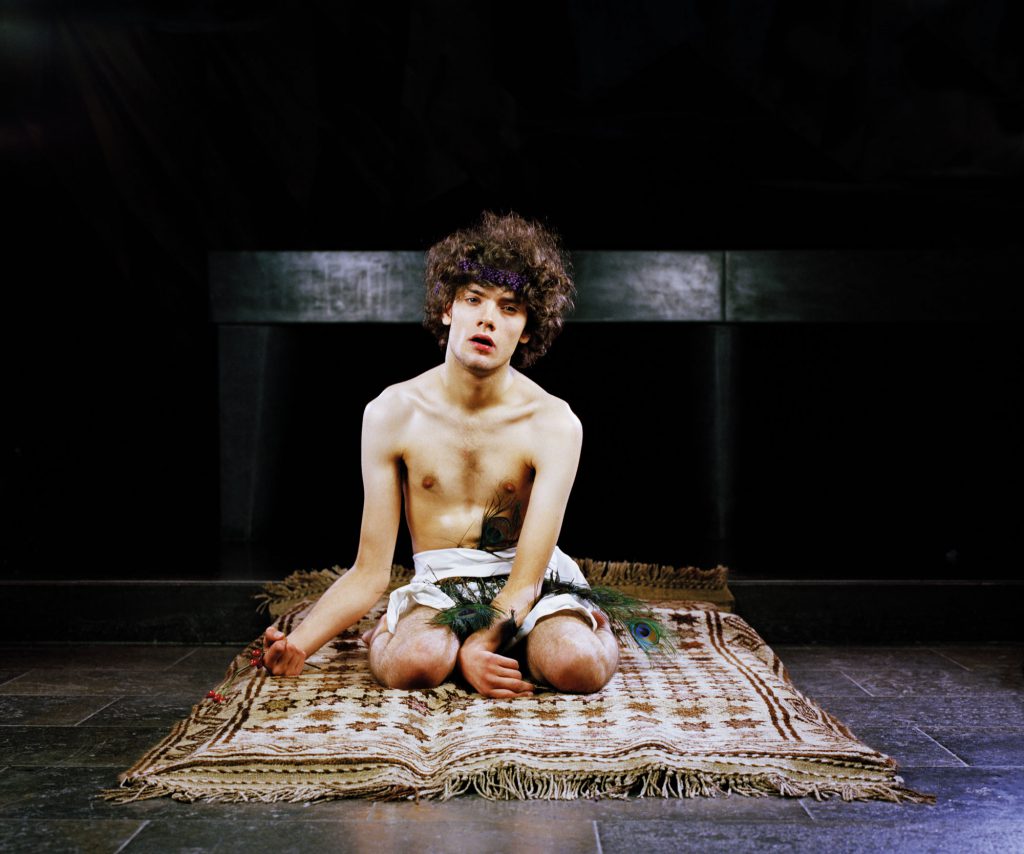
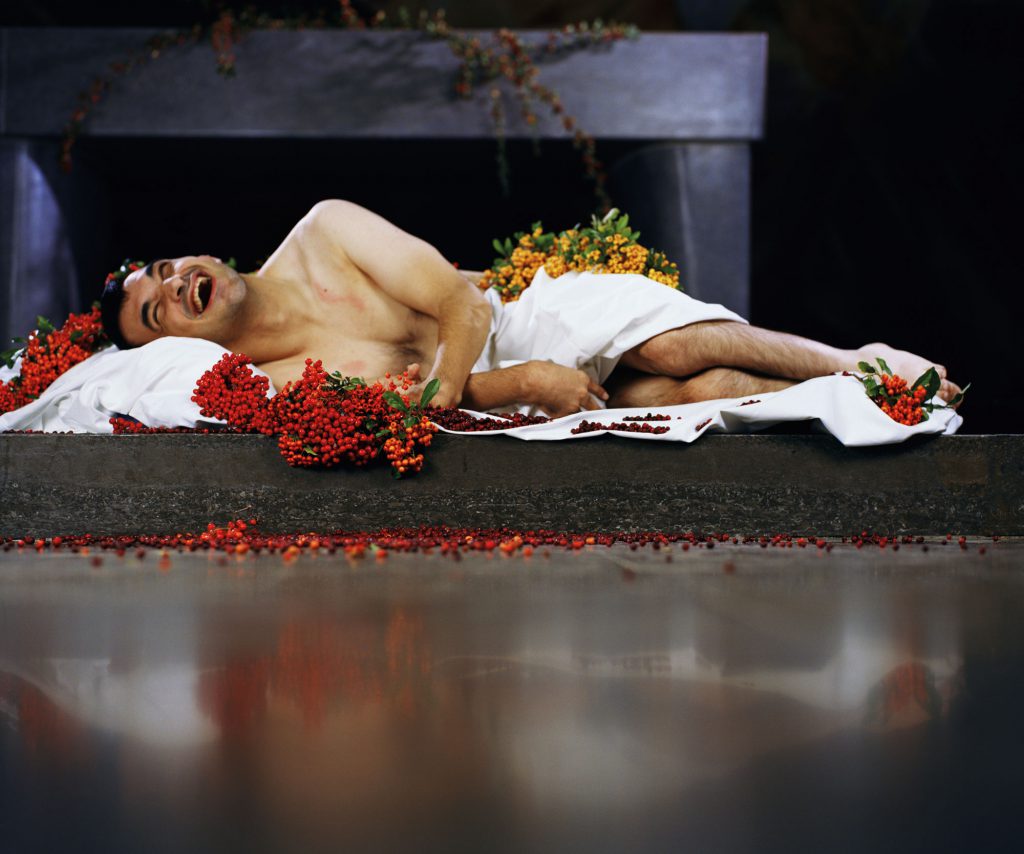
F.P.: I saw your latest work NEEDS. Again working with disadvantaged people. Tell us about that.
J.K.: NEEDS. focuses on the essential needs of man. I started from the idea that all people are in need of attention and physical contact; I talked to some disabled people regarding love, relationships, friendship and trust, from these conversations I made several videos.
Janina and Oliver are a couple for 10 years. They will get married this summer. Miriam is 18 years old and is looking forward to her first real kiss. Karl has been seeing Monika, an “Intimacy carer”, for some years, that has changed their lives. Monika and Karl show us intimacy, sensuality, complicity. Diana and Andreas have been married for many years. Their relationship is marked by his autism, and her need to feel close to him. Kurt has been in foster care since he was two years old. He has been tied to a bed and chair since he turned four. When I ask about his mother his face lights up.
This work was created for a project in collaboration with AkademieGraz in Austria on the occasion of an exhibition at GrazMuseum, but it does not finish here. We have decided to continue the project on a European level.
www.juliakrahn.com/needs
F.P.: What are you working on now?
J.K.: I have been invited to a residence in Bad Wilsnack, near Berlin, which will be completed with the exhibition figura.
Bad Wilsnack has been a place of worship and pilgrimage, because of the three bloody wafers that were destroyed under the Protestant Reformation.
In Italy I’m working on a performance, l’Oblio, in occasion of the ArtOnTime award.
It is possible to participate in the realization through the online crowdfunding portal Artraising.org
Also I carry on the 33MM research – Maria Magdalena, which consists of 33 portraits of different women who together create a collective of sacred contemporary.


